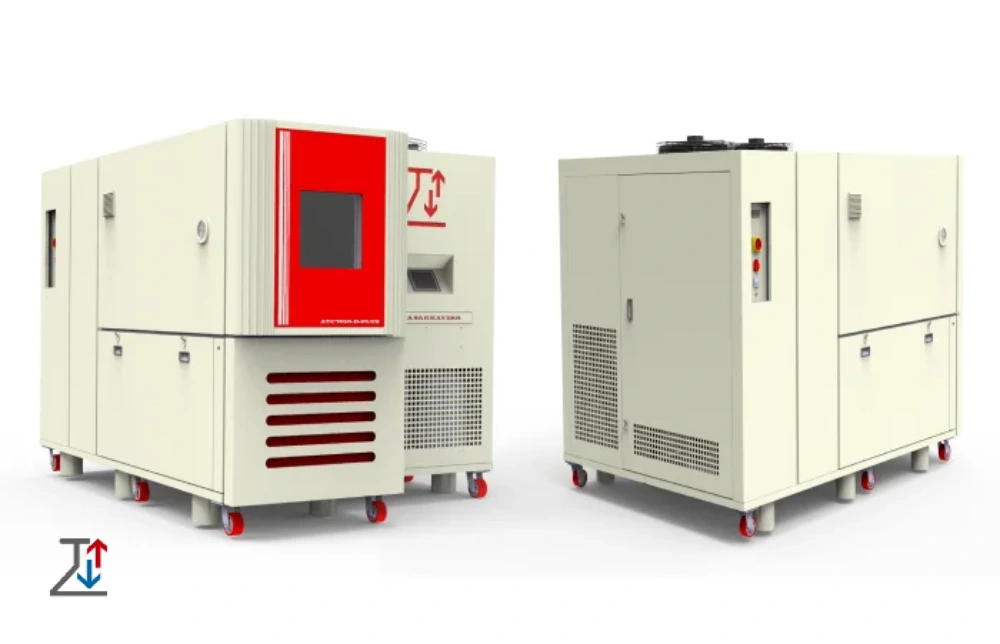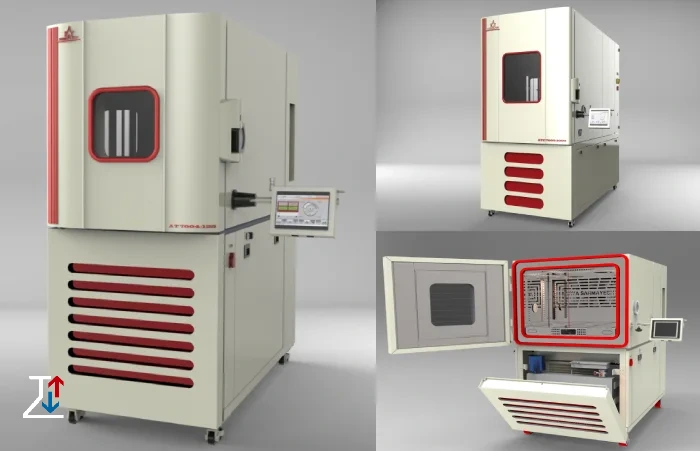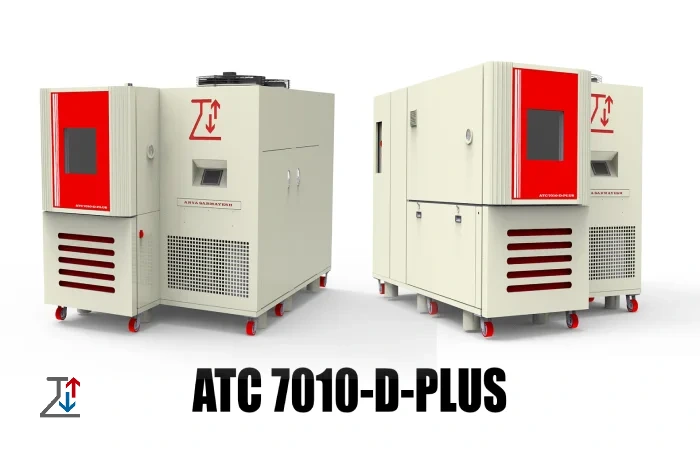
Climatic test chambers play a pivotal role in environmental simulation, providing manufacturers and researchers with the ability to replicate real-world conditions in a controlled laboratory setting. These chambers simulate a range of environmental factors such as temperature, humidity, pressure, and altitude variations, allowing products to undergo stress testing that would otherwise be difficult or impractical in the natural environment. This process is crucial across various industries, including automotive, aerospace, electronics, and materials science, ensuring that products are durable, safe, and reliable under extreme conditions.
What is Environmental Simulation?
Environmental simulation is the process of recreating specific environmental conditions to evaluate how products, materials, or components will perform in real-world situations. Unlike traditional testing methods, which may focus only on specific factors, environmental simulation in climatic test chambers aims to mimic complex, dynamic conditions that a product might face during its lifecycle. This can include fluctuating temperatures, varying humidity levels, UV exposure, saltwater corrosion, and even high-altitude conditions.
By subjecting products to these simulated conditions, engineers can identify potential weaknesses, predict performance in the field, and make design improvements to enhance the product’s reliability, longevity, and safety.
Key Environmental Factors Simulated by Climatic Test Chambers

1. Temperature Extremes
Temperature is one of the most critical factors in environmental simulation. Climatic test chambers can replicate both extremely high and low temperatures to assess a product’s ability to withstand temperature fluctuations. For example, electronics, automotive parts, and materials used in outdoor applications need to perform under a broad range of temperatures, from freezing cold to scorching heat. Climatic test chambers can simulate these temperature extremes, which can range from -70°C to 200°C or higher, depending on the chamber’s specifications.
- Cold Testing helps simulate environments like polar regions or high-altitude cold zones where materials, machinery, and electronics may freeze or crack.
- Heat Testing helps replicate hot climates, industrial machinery conditions, or areas exposed to high temperatures, ensuring that the product can operate without overheating or failing.
2. Humidity Control
Humidity is another vital environmental factor for product testing. Excess moisture in the air can cause electronics to short-circuit, metals to corrode, and textiles or materials to degrade. Similarly, extremely dry conditions can result in static electricity buildup or material brittleness.
Climatic test chambers allow manufacturers to precisely control the humidity levels inside the chamber, typically ranging from 10% to 98% relative humidity (RH). By testing products in these conditions, manufacturers can assess how their products react to both damp and dry environments, ensuring that they perform reliably even in challenging conditions.
3. Pressure and Altitude Simulation
Certain climatic chambers are equipped to simulate changes in atmospheric pressure and altitude. These simulations are particularly important for aerospace, automotive, and electronics industries, where products may be exposed to low-pressure environments, such as in high-altitude flight or deep-sea conditions.
For example, aerospace components need to be tested at high altitudes to ensure their functionality in low-pressure conditions that occur during flight. Similarly, products like automotive engines must be tested for their performance in high-altitude areas where the air is thinner, affecting engine efficiency and cooling systems.
4. UV Radiation and Light Exposure
UV exposure can degrade many materials, causing plastics, rubber, paints, and coatings to become brittle, discolored, or weakened. Climatic test chambers can simulate prolonged exposure to ultraviolet (UV) light, mimicking the impact of sunlight over time. This is especially important for testing products that are used outdoors or are exposed to sunlight, such as automotive exteriors, solar panels, and building materials.
5. Corrosion Testing
Saltwater, fog, and other corrosive elements can accelerate the wear and tear of materials, particularly metals. Climatic test chambers can create a corrosive environment by introducing saline mist or other chemicals that mimic the effects of salty air or coastal conditions. This is crucial for industries like automotive, aerospace, and manufacturing, where product longevity and resistance to corrosion are of utmost importance.
Applications of Climatic Test Chambers in Various Industries

1. Automotive Industry
In the automotive industry, climatic test chambers are used to simulate harsh environmental conditions that vehicles may encounter in different parts of the world. These chambers can replicate the intense heat of a desert, the freezing cold of northern climates, or the humidity of coastal regions. By testing car components such as engines, electronics, tires, and air conditioning systems, manufacturers can ensure that vehicles will operate reliably in all environments, regardless of extreme temperatures, humidity, or pressure.
2. Aerospace and Aviation
For the aerospace industry, climatic test chambers are indispensable in testing components for aircraft, satellites, and space exploration equipment. These chambers replicate the extreme conditions that products might face during takeoff, high-altitude flight, and re-entry into the atmosphere. Temperature fluctuations, pressure changes, and radiation exposure are all carefully simulated to ensure the equipment can withstand the rigors of space travel and aviation.
3. Electronics and Consumer Goods
Electronics such as smartphones, laptops, and medical devices are sensitive to environmental conditions. Climatic test chambers ensure that these products will continue to function properly despite exposure to extreme heat, cold, or humidity. For instance, electronics need to be tested for functionality at both high and low temperatures to ensure reliability during use in different climates. Similarly, manufacturers can assess how moisture or dust might affect a product’s performance or longevity.
4. Materials Testing and Research
In materials science, climatic test chambers are crucial for evaluating the properties of new materials under various environmental conditions. Researchers can test how materials behave when exposed to high humidity, extreme temperatures, or UV radiation. This is especially important for developing materials used in construction, manufacturing, or renewable energy sectors, where long-term durability is essential.
5. Pharmaceuticals and Biotechnology
Pharmaceuticals and biotechnology companies also benefit from climatic test chambers, which help simulate storage conditions, transport conditions, and shelf life. Vaccines, biologics, and medications are sensitive to temperature and humidity variations. By mimicking these conditions, manufacturers can ensure the stability and safety of their products before they are distributed to healthcare providers.
Advantages of Using Climatic Test Chambers for Environmental Simulation
1. Accurate Performance Prediction
By replicating real-world environmental conditions, climatic test chambers allow manufacturers to accurately predict how their products will perform in the field. This predictive capability helps prevent costly failures and ensures that products will meet customer expectations for reliability.
2. Faster Product Development
Climatic test chambers accelerate the product development process by providing quick and controlled testing of products across various environmental conditions. This allows manufacturers to identify issues early, make necessary adjustments, and reduce time-to-market.
3. Compliance with Industry Standards
Many industries have strict standards regarding product performance in various environmental conditions. Climatic testing ensures that products meet these standards, whether for regulatory compliance, certification, or quality assurance purposes.
4. Enhanced Durability and Safety
By subjecting products to extreme conditions, manufacturers can improve their designs to ensure that products are more durable and safer for consumers. For instance, testing a product for extreme temperatures or humidity can reveal design flaws that might otherwise go unnoticed.
Conclusion
Climatic test chambers play a crucial role in environmental simulation, offering a controlled environment where products, materials, and components can be subjected to extreme conditions. By replicating temperature, humidity, pressure, UV exposure, and other environmental factors, these chambers allow manufacturers to assess a product’s durability and performance under real-world stress. The insights gained through climatic testing are essential for industries such as automotive, aerospace, electronics, and pharmaceuticals, helping to create safer, more reliable products that stand the test of time.
Related articles in Aryasarmayesh:
Test Chambers and Their Application in Simulating Climatic Conditions
Importance of climatic test chamber in pharmaceuticals
The Importance of Heat and Cold Test Chambers